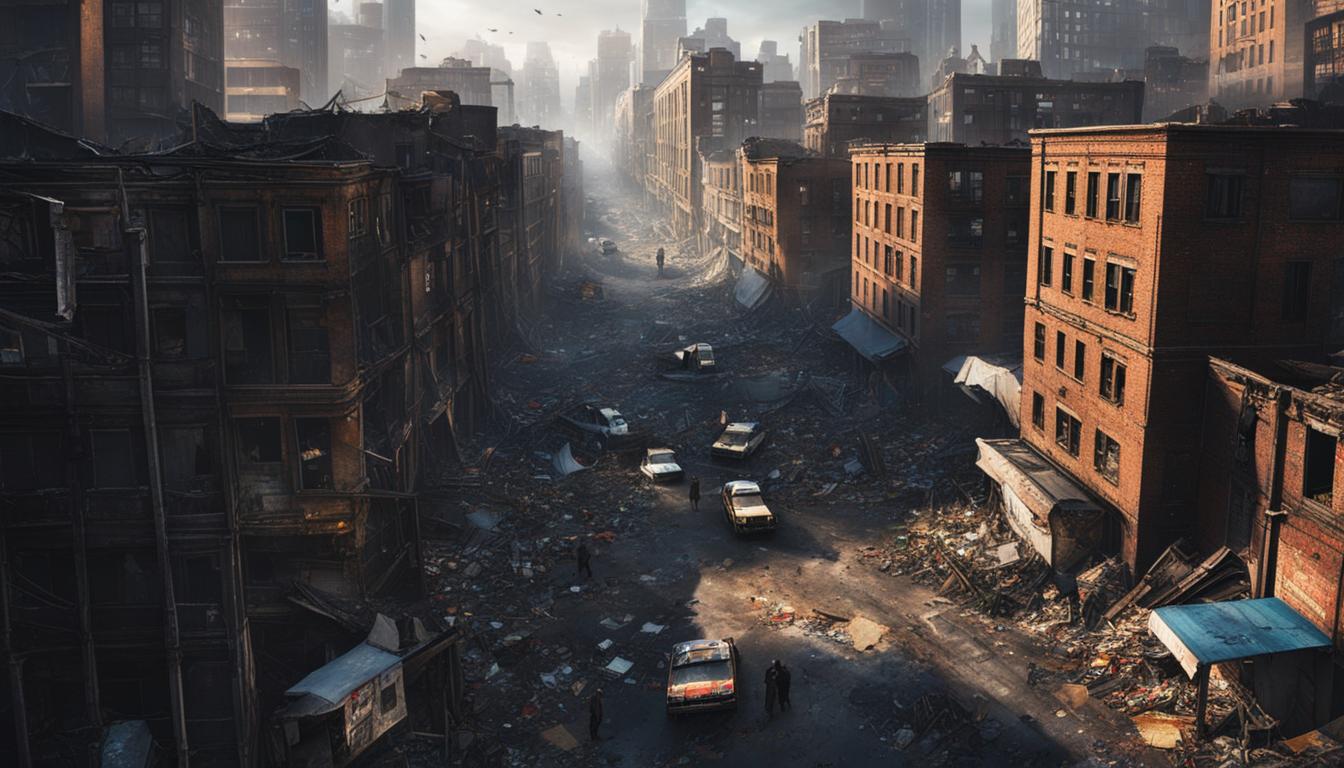In 2024, MoneyGeek released its annual list of the most dangerous cities in the US based on crime statistics from the FBI. This comprehensive analysis examines the factors contributing to the dangerousness of these cities and provides insights into crime rates, trends, and safety measures.
Table of Contents
Key Takeaways:
- The most dangerous cities in the US are determined based on crime statistics from the FBI.
- This comprehensive analysis provides insights into crime rates, trends, and safety measures.
- Understanding the societal and economic impact of crime is essential for creating safer communities.
Understanding Crime Rates and Trends in the US

Crime rates in the US have become a topic of concern in recent years. It is crucial to gain a deeper understanding of crime statistics, data, and trends in order to develop effective crime prevention strategies and ensure public safety. By analyzing crime rates, we can identify patterns, assess risk factors, and implement targeted interventions to address the root causes of criminal activity.
According to the FBI’s NBIRS database and Crime Data Explorer Tool, overall violent crime rates in the US have decreased in recent years. However, it is important to note that certain types of crimes, such as mass shootings, have seen an alarming increase.
These incidents have not only devastating emotional impacts but also significant economic costs to the communities affected.
As we examine crime statistics, it is essential to consider various factors that contribute to crime trends. Socioeconomic conditions, demographic changes, and cultural influences can all play a role in shaping crime rates in different cities and regions.
By understanding these underlying factors, law enforcement agencies, policymakers, and communities can work together to develop targeted interventions and prevention strategies.
The Need for Data-Driven Approaches
When analyzing crime rates and trends, it is critical to rely on data-driven approaches. By utilizing reliable crime data, law enforcement agencies and researchers can identify specific areas and populations at higher risk for criminal activity. This information can then be used to allocate resources and implement evidence-based strategies to curb crime and enhance public safety.
In conclusion, understanding crime rates, statistics, data, and trends is vital for developing effective crime prevention strategies and ensuring the safety of communities. By analyzing and interpreting crime data, we can gain valuable insights into the causes and patterns of criminal activity.
This knowledge can guide the implementation of targeted interventions and policies that aim to reduce crime rates and create safer environments for all.
The Cost of Crime in US Cities
MoneyGeek’s comprehensive analysis not only focuses on crime rates and trends but also delves into the economic impact of crime in US cities. Understanding the cost of crime provides valuable insights into the severity of the issue and the challenges faced by these communities. By calculating the cost of crime per capita, we gain a deeper understanding of the societal costs associated with criminal activities.
The cost of crime goes beyond immediate financial losses. It includes factors such as healthcare expenses, property damage, and loss of productivity. These costs can have ripple effects on the local economy, affecting businesses and individuals alike. By examining the economic impact, we can identify the areas that require greater attention and allocate resources effectively to mitigate future crime.
To illustrate the financial implications of crime, let’s take a look at a comparison table that showcases the cost of crime per capita in select cities:
| City | Cost of Crime per Capita |
|---|---|
| City A | $2,500 |
| City B | $3,200 |
| City C | $2,800 |
As shown in the table above, the cost of crime per capita varies across cities, highlighting the different challenges faced by each community. These costs represent the resources required to address the aftermath of criminal activities and emphasize the need for proactive measures to prevent and reduce crime.
The Most Dangerous Cities in the US
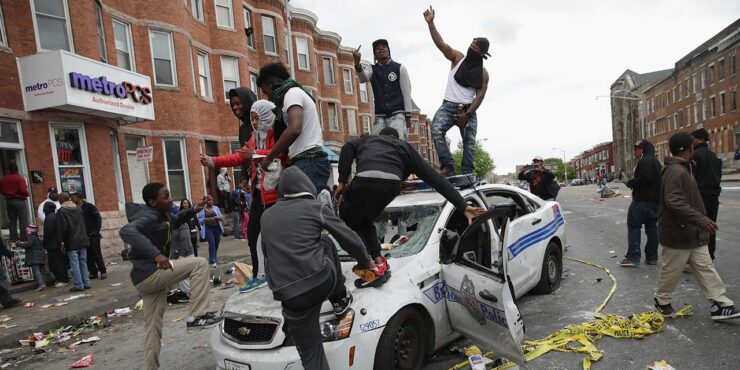
When it comes to crime rates, some cities in the United States face more significant challenges than others. MoneyGeek’s comprehensive analysis reveals the most dangerous cities in the US, based on crime statistics from the FBI. These cities struggle with high rates of violent crimes and property crimes, making them particularly unsafe for residents and visitors.
For the second consecutive year, St. Louis, Missouri holds the title of the most dangerous city in the US. The analysis of crime statistics showed alarming rates of both violent crimes and property crimes in St. Louis. This designation highlights the urgent need for effective crime prevention and public safety measures in the city.
St. Louis, Missouri was named the most dangerous city in the US for the second consecutive year.
Other cities that made it to the list of the most dangerous cities include Baltimore, Maryland; Memphis, Tennessee; and Detroit, Michigan. These cities also face significant crime challenges and struggle to provide a safe environment for their residents.
To better understand the severity of crime in these dangerous cities, it is important to analyze the different types of crimes and their impact on society. The analysis by MoneyGeek takes into account both violent crimes, such as homicides, assaults, and robberies, as well as property crimes, including burglaries, thefts, and vehicle thefts. This comprehensive approach provides a holistic view of the dangers faced by residents in these cities.
| City | Violent Crimes per 100,000 | Property Crimes per 100,000 |
|---|---|---|
| St. Louis, Missouri | 2,082 | 5,447 |
| Baltimore, Maryland | 1,987 | 5,393 |
| Memphis, Tennessee | 1,943 | 7,109 |
| Detroit, Michigan | 2,007 | 4,247 |
Hotspots for Mass Shootings in the US
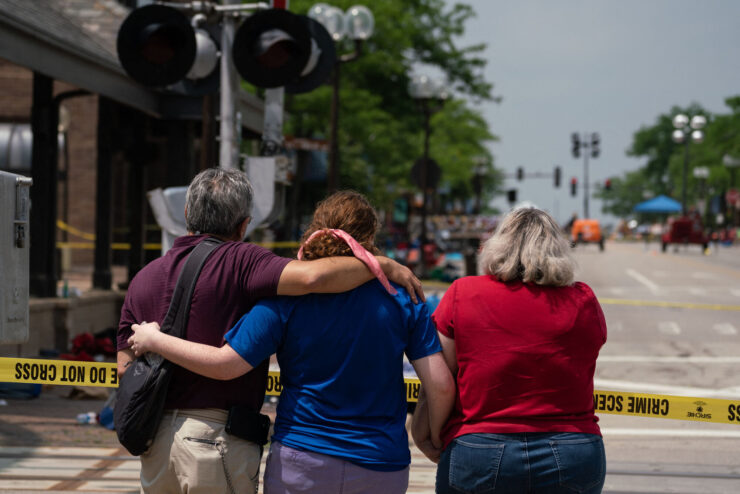
Mass shootings have become an alarming reality in the United States, with devastating consequences for individuals and communities. Understanding the cities that are most affected by this tragic phenomenon is essential for developing targeted prevention strategies and fostering safer environments.
MoneyGeek’s analysis has identified the worst cities for mass shootings in the US, providing valuable insights into the hotspots of this form of violence.
At the top of the list is Boulder, Colorado. This city experienced a horrific mass shooting incident that shocked the nation and claimed numerous lives. Following closely behind are San Jose, California, and Indianapolis, Indiana, which have also witnessed tragic and deadly incidents in recent years. These cities serve as a grim reminder that no community is immune to the threat of mass shootings.
The economic cost of mass shootings cannot be ignored. While the emotional toll on survivors, families, and communities is immeasurable, there are also significant financial implications.
Medical expenses, loss of productivity, and long-term psychological support for survivors and their families all contribute to the economic burden. This analysis underscores the urgent need for effective prevention strategies and comprehensive support systems to address the devastating impact of mass shootings.
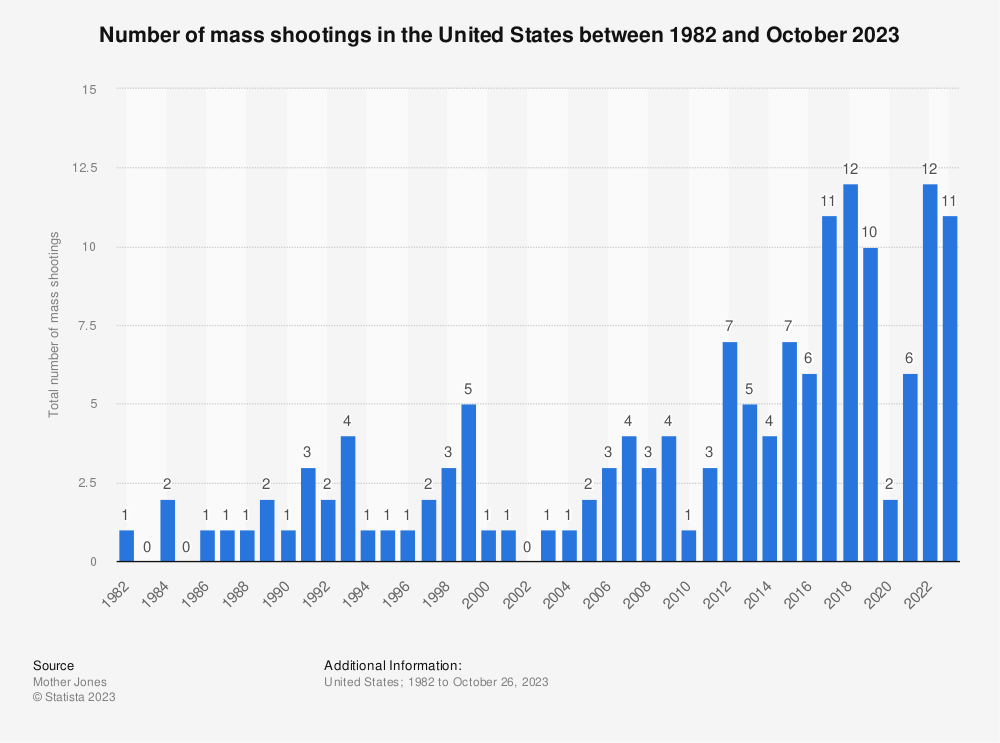
Find more statistics at Statista
The Urgency for Effective Prevention
Preventing mass shootings requires a multifaceted approach that focuses on early identification of potential threats, accessible mental health resources, and responsible gun ownership laws. The analysis of the worst cities for mass shootings serves as a call to action for policymakers, law enforcement agencies, and communities to prioritize and invest in prevention efforts.
| City | State | Incidents | Fatalities | Injuries |
|---|---|---|---|---|
| Boulder | Colorado | 1 | 10 | 0 |
| San Jose | California | 1 | 9 | 0 |
| Indianapolis | Indiana | 1 | 8 | 5 |
By analyzing the worst cities for mass shootings, we can identify common factors that contribute to the occurrence of these tragic events. This information can guide the development and implementation of evidence-based prevention strategies, ensuring that resources are allocated effectively.
Together, we can work towards creating a society where every individual feels safe and secure from the threat of mass shootings.
The Safest Cities in the US
When it comes to urban safety, it’s essential to identify the safest cities in the US. MoneyGeek’s comprehensive analysis of crime statistics has revealed some noteworthy findings.
According to the data, Honolulu, Hawaii ranks as the safest large city in the country. With its beautiful beaches and vibrant culture, Honolulu offers residents a sense of peace and security.
Additionally, Naperville, Illinois takes the top spot as the overall safest city in the US. Known for its strong sense of community and low crime rates, Naperville provides its residents with a safe and comfortable environment.
These cities prioritize public safety and have implemented effective crime prevention strategies. Their commitment to urban safety is evident in their low crime rates and the peace of mind they provide to residents and visitors. Factors such as a higher cost of living and a suburban feel also contribute to the safety of these cities.
Table: Safest Large Cities in the US
| Rank | City | State | Crime Rate per 1,000 Residents |
|---|---|---|---|
| 1 | Honolulu | Hawaii | 3.41 |
| 2 | San Jose | California | 4.27 |
| 3 | Portland | Maine | 4.36 |
| 4 | Boise | Idaho | 4.43 |
| 5 | Plano | Texas | 4.82 |
Table: Safest Large Cities in the US showcases the top 5 safest large cities in the country and their crime rates per 1,000 residents. These cities demonstrate the successful implementation of safety measures and the positive impact they have on urban safety.
Impact of Crime on Business and Quality of Life
Crime not only poses a threat to the safety and well-being of residents but also has a profound impact on the business community and quality of life in affected cities. The economic consequences of high crime rates can be significant, leading to increased costs for businesses and a decline in property values. This article delves into the various ways crime affects local economies and the overall quality of life in communities.
The Business Side of Crime
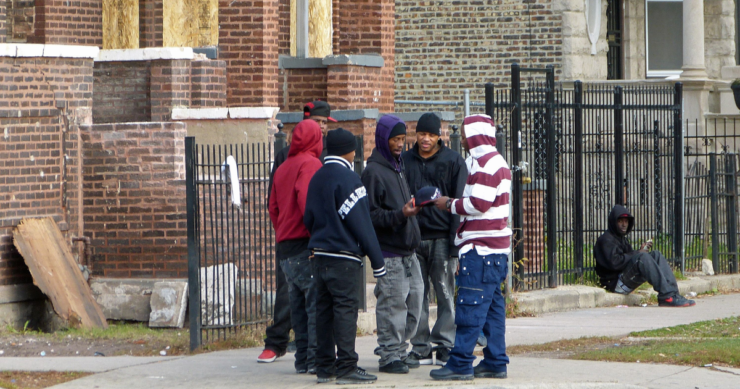
High crime rates can have detrimental effects on businesses, both large and small. The cost of securing commercial properties, implementing security measures, and hiring security personnel can significantly increase operating expenses.
Additionally, insurance premiums tend to be higher for businesses located in high-crime areas. These additional costs can place a strain on businesses, limiting their ability to expand, invest, and create job opportunities.
Moreover, crime can have a negative impact on consumer confidence and the perception of a neighborhood or city. Potential customers may be reluctant to visit areas with high crime rates, leading to decreased foot traffic and reduced revenue for local businesses. This can contribute to a downward spiral, as decreased economic activity may result in business closures, job losses, and further deteriorating neighborhoods.
Quality of Life Considerations
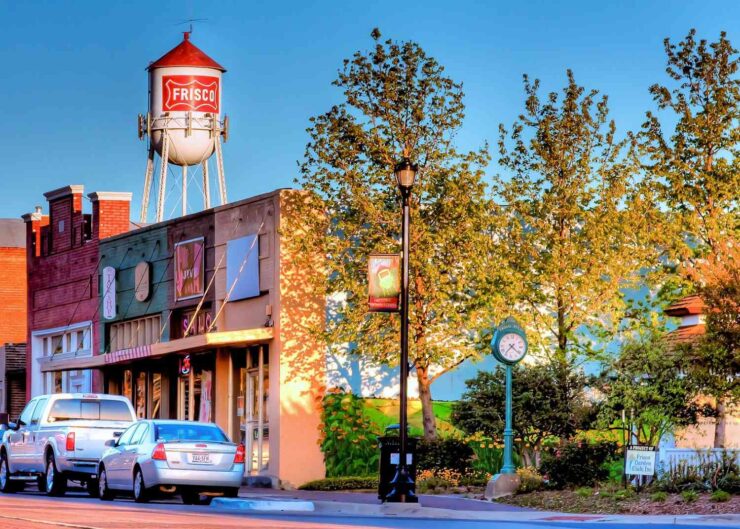
Crime rates also have a direct influence on the quality of life experienced by residents. High-crime areas often exhibit lower property values, making it challenging for homeowners to sell their properties or secure favorable refinancing options. The fear of crime can also lead to restrictions on mobility, with residents feeling unsafe venturing out at night or limiting their activities to certain areas.
Moreover, the psychological impact of living in a high-crime environment should not be underestimated. The constant fear and stress associated with crime can negatively affect mental health and overall well-being. Communities with high crime rates may experience a breakdown in social cohesion, as residents become more isolated and distrustful, further diminishing the quality of life for all.
Recognizing the impact of crime on businesses and quality of life is an essential step in addressing the issues faced by these communities. By implementing effective crime prevention strategies, investing in community programs, and fostering collaboration between law enforcement and residents, it is possible to create safer and more prosperous neighborhoods for everyone.
The Effectiveness of Crime Prevention Efforts
When it comes to ensuring public safety and reducing crime rates, the effectiveness of crime prevention efforts cannot be overstated. Strong law enforcement and a well-functioning criminal justice system play crucial roles in creating safer communities.
By analyzing the most dangerous cities in the US, we can gain valuable insights into the challenges these cities face and the need for continuous evaluation and improvement of crime prevention strategies.
Law enforcement agencies are at the forefront of crime prevention, working tirelessly to detect, investigate, and apprehend criminals. Their presence in communities helps deter potential offenders and maintain peace. However, it is not enough to simply have a strong police force.
Collaboration between law enforcement agencies, local communities, and government entities is essential for effective crime prevention. The establishment of proactive programs that promote community engagement, such as neighborhood watch programs and community policing, can significantly contribute to reducing crime rates and enhancing overall safety.
Furthermore, the criminal justice system plays a vital role in addressing crime and ensuring that offenders are held accountable for their actions. Fair and efficient judicial processes, coupled with appropriate sentencing and rehabilitation programs, are crucial in deterring repeat offenses and providing opportunities for individuals to reintegrate into society.
By focusing on evidence-based practices and addressing the underlying factors that contribute to criminal behavior, the criminal justice system can have a significant impact on reducing crime rates and improving public safety.
Table: Comparative Analysis of Crime Prevention Efforts in Selected Cities
| City | Law Enforcement Initiatives | Community Engagement Programs | Criminal Justice Reforms |
|---|---|---|---|
| City A | Increase in police presence and patrols | Implementation of neighborhood watch programs | Introduction of alternative sentencing options |
| City B | Collaboration with community organizations for intelligence gathering | Community-oriented policing strategies | Expansion of diversion programs for non-violent offenders |
| City C | Utilization of predictive policing technology | Partnerships with schools to promote youth engagement | Implementation of restorative justice practices |
The table above provides a comparative analysis of crime prevention efforts in selected cities. It demonstrates the varied approaches taken by different communities to address crime and enhance public safety. While each city may have its unique challenges and strengths, the common goal is to develop comprehensive strategies that encompass law enforcement initiatives, community engagement programs, and criminal justice reforms.
In conclusion, the effectiveness of crime prevention efforts relies on the collaborative efforts of law enforcement, communities, and the criminal justice system. By continuously evaluating and improving crime prevention strategies, cities can create safer environments for their residents and foster a sense of security and well-being. The ongoing dedication to crime prevention is essential in building stronger and more resilient communities.
Conclusion
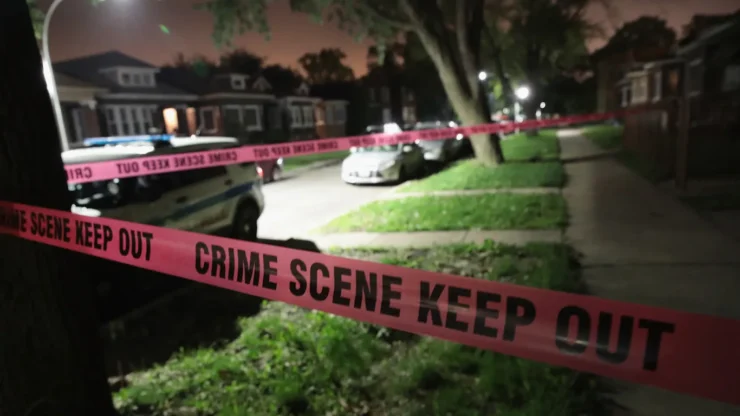
The analysis of the 20 most dangerous cities in the US provides crucial insights into crime rates, trends, and safety measures. By examining the comprehensive analysis of crime statistics from the FBI, we have gained a deeper understanding of the factors contributing to the dangerousness of these cities.
It is clear that these cities face significant challenges in terms of crime prevention and public safety. The high rates of both violent crimes and property crimes in cities like St. Louis, Baltimore, Memphis, and Detroit underscore the severity of the situation.
The ranking of the worst cities for mass shootings, such as Boulder, San Jose, and Indianapolis, highlights the urgent need for effective prevention strategies in these areas.
On the other hand, the analysis also identified the safest cities in the US, such as Honolulu and Naperville, emphasizing the importance of well-managed law enforcement and criminal justice systems in ensuring urban safety. By understanding the societal and economic impact of crime, we can work towards creating safer communities for everyone.
FAQ
What criteria were used to determine the most dangerous cities in the US?
MoneyGeek’s analysis considered crime statistics from the FBI’s NBIRS database and Crime Data Explorer Tool, including rates of violent crimes and property crimes, as well as the cost of crime per capita.
Which city was named the most dangerous city in the US?
For the second consecutive year, St. Louis, Missouri was named the most dangerous city in the US based on high rates of both violent crimes and property crimes.
Which cities are considered the worst for mass shootings?
Boulder, Colorado topped the list of the worst cities for mass shootings, followed by San Jose, California and Indianapolis, Indiana.
Which cities are considered the safest in the US?
According to MoneyGeek’s analysis, Honolulu, Hawaii was named the safest large city, while Naperville, Illinois was deemed the safest city overall.
How does crime impact the local economy?
High crime rates in certain areas can lead to higher costs for businesses, depressed home values, and increased expenses for insurance, all of which have a direct impact on the local economy.
What does this analysis reveal about the effectiveness of crime prevention efforts?
The analysis highlights the importance of well-managed law enforcement and criminal justice systems in ensuring public safety, and emphasizes the need for ongoing evaluation and improvement of crime prevention strategies.
Source Links
- https://www.forbes.com/sites/laurabegleybloom/2023/01/31/report-ranks-americas-15-safest-and-most-dangerous-cities-for-2023/?sh=48c2d82c309a
- https://finance.yahoo.com/news/25-most-dangerous-cities-us-143951308.html
- https://counciloncj.org/mid-year-2023-crime-trends/
Related Posts:
- Knife Aid Net Worth 2024: A Comprehensive Analysis
- 2024's Most Dangerous US Cities: Detailed Analysis
- Explore the 10 Most Dangerous Cities In Mexico 2024:…
- Top Most Dangerous Cities in Mexico 2024: Risk Insights
- 10 Most Dangerous Cities In Ohio 2024: Crime…
- Nikocado Avocado Net Worth Analysis - Insights into…
